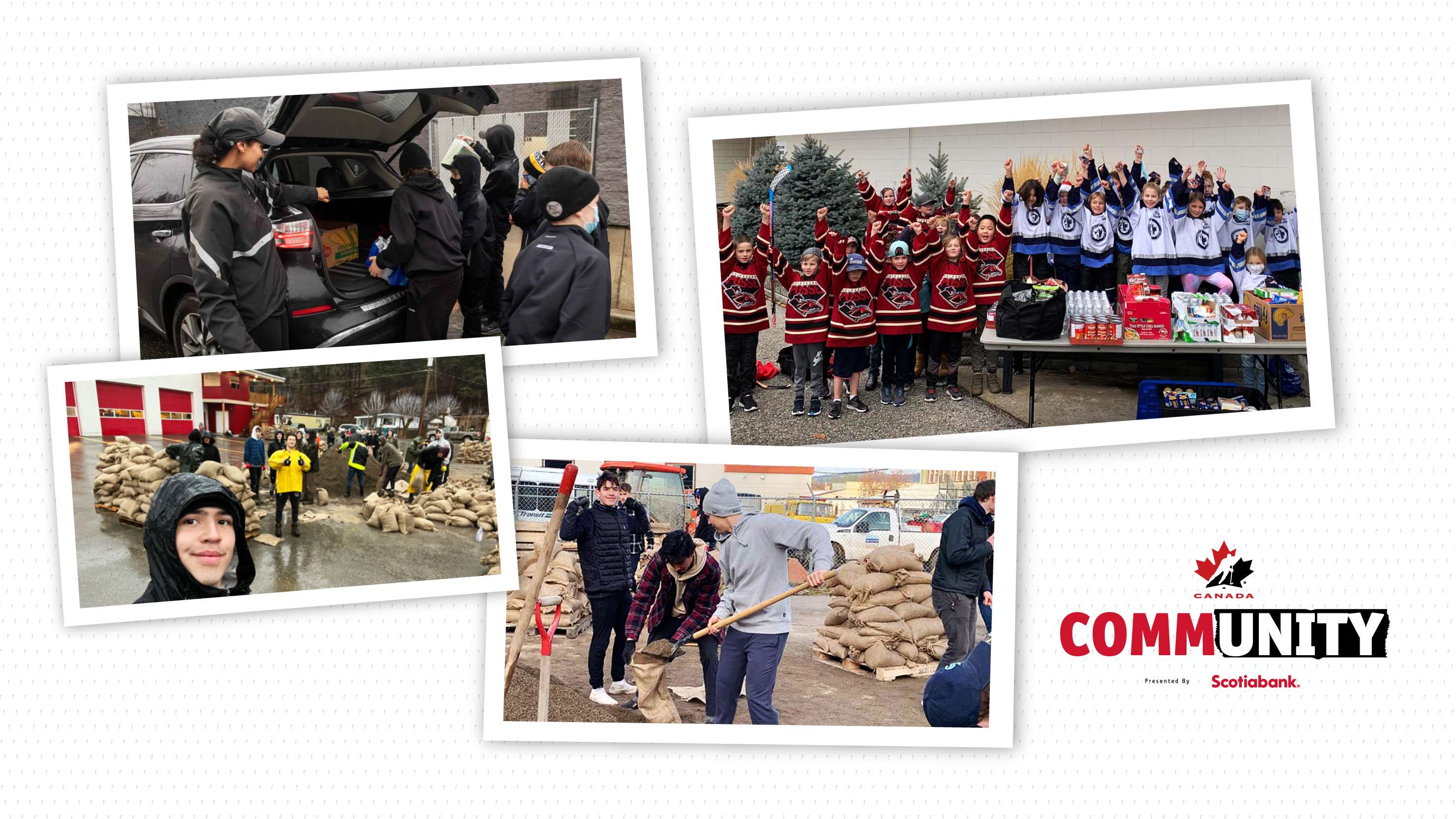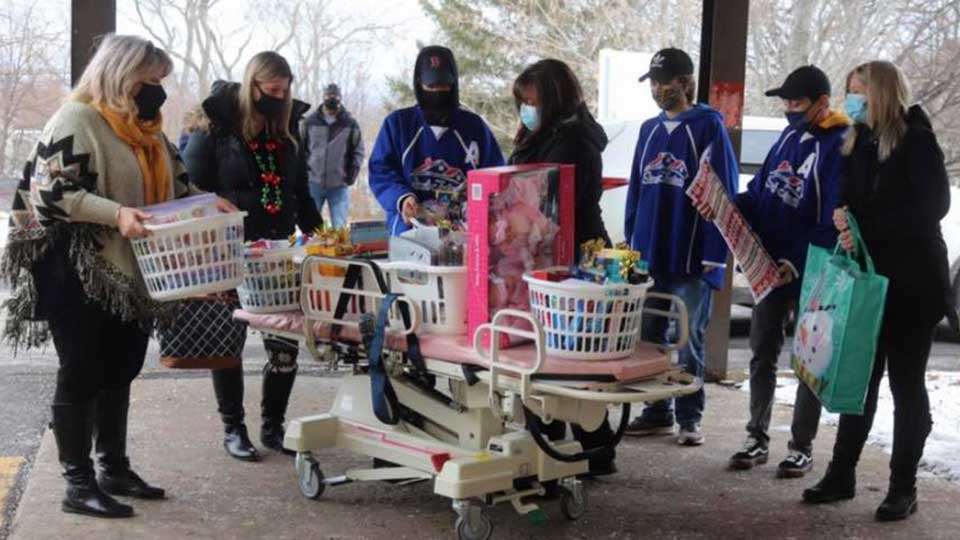
Schedule
Team Canada (Men)
IIHF World Junior Championship | Dec. 26, 2024-Jan. 5, 2025
Spengler Cup | Dec. 26-31, 2024
4 Nations Face-Off | Feb 12-20, 2025
IIHF U18 World Championship | April 23-May 3, 2025
IIHF World Championship | May 9-25, 2025
U17 World Challenge | Nov. 3-9, 2024
Hlinka Gretzky Cup | Aug. 5-10, 2024
Junior A World Challenge | Dec. 9-15, 2024
National Junior Team vs. USPORTS | Dec 12-13, 2024
Search

The transformative game
Nunavut’s historic hockey debut at the 2019 Canada Winter Games is sparking positive developments across the northern territory

It was a picture of pure Canadiana in Nunavut.
On Feb. 17, boys and girls from across the immense, sparsely-populated territory trudged out to the streets and outdoor rinks on a frigid, wintry day to play the national game.
While a lot of kids in the morning perhaps imagined themselves as Connor McDavid on an end-to-end rush, they were emulating the heroics of 16-year-old Josie Cote that afternoon and evening.
Cote, a product of Iqaluit, became an instant sporting hero in Nunavut by scoring two goals in the third period to deliver the territory a 5-3 victory over Yukon in its debut at the Canada Winter Games.
“There were some tears of joy in the room after the win,” said Martin Joy, the team’s head coach. “It is such a huge accomplishment for those boys.”
Joy’s phone blew up with text messages as Nunavummiut logged onto a live stream to witness the action from Red Deer, Alta.
The buzz was not only huge in Nunavut: Canadians from coast-to-coast-to-coast took to social media to offer congratulations and media outlets all around the country chronicled the victory.
The groundwork began to get laid in 2015 when Hockey Nunavut committed to strive towards icing its first Canada Winter Games hockey team in 2019.
Inevitably, the road towards shaping the roster was paved with some obstacles.
“If you were to look at a map of Nunavut, you would see there are no roads connecting these communities,” explained Joy, who has been coaching various levels of minor hockey in Nunavut for close to a decade. “It is so hard even getting kids together up here for a regular tournament.
“There are only two rinks in the territory that are not natural ice rinks. We have [ice] plants in Iqaluit and Rankin [Inlet], but all the other communities are waiting for the rinks to freeze in, but sometimes they don’t.”
According to Joy, these hurdles translate into some hockey players in Nunavut only playing in four or five actual games a year due to age divisions consisting of 12-15 athletes in some communities.
However, signs of promising on-ice potential brimmed leading up to 2019.
“We did notice that we were beginning to develop better skaters,” remarked Joy. “We figured if we could get the skating down, with a concerted effort, we could teach parts of the game that would allow us to be competitive.”
Fortunately, the coaching staff identified 20 athletes (born from 2002-04) – 17 with an Inuit background – who were enthusiastic about growing together as a team to fully capitalize on a once-in-a-lifetime experience.
Evidence of the commitment took form through eight members of the team registering for clubs or hockey schools outside of Nunavut in 2018-19 out of a desire to grow in skill and become more familiar with how the game is played in other Canadian regions.
Defenceman Max Joy (Martin’s son), the captain, was the lone player who played out-of-territory before last season. He joined the Notre Dame Hounds Bantam AAA team at the start of the 2017-18 campaign.
Joy said he knows of “12 or 13 athletes” from younger age groups who are opting to try hockey in other Canadian provinces to take their game to another level and to learn the life skills that come with living away from home at a young age.
This is not the lone significant positive development caused by the Feb. 17 game.
“I think it was transformational, as a lot of kids who are born in the ’06, ’07 and ’08 birth years are talking about their time,” said Joy. “They are looking forward to their time in four years to playing in P.E.I. [at the 2023 Canada Winter Games]. That is their dream.”
Hockey Nunavut is striving for the boys to have company four years from now.
“We are making a commitment to have a female team to compete at the Games in 2023,” said Mike McPherson, the president of Hockey Nunavut. “We will be starting preparations now by looking at some tournaments this year to start identifying some kids that will be eligible.”
Perhaps on a chilly morning in February 2023, a young girl will start the morning pretending she is Marie-Philip Poulin at the Winter Olympics, and by night she will be re-creating a game-winning goal scored by a girl on that historic Canada Winter Games roster.
For more information: |
- <
- >
























 Piper Hays coaching with the Vancouver Angels. (VFIHA)
Piper Hays coaching with the Vancouver Angels. (VFIHA)
 Hayley Palmer with a Vancouver Angels player she coaches.
Hayley Palmer with a Vancouver Angels player she coaches.






















